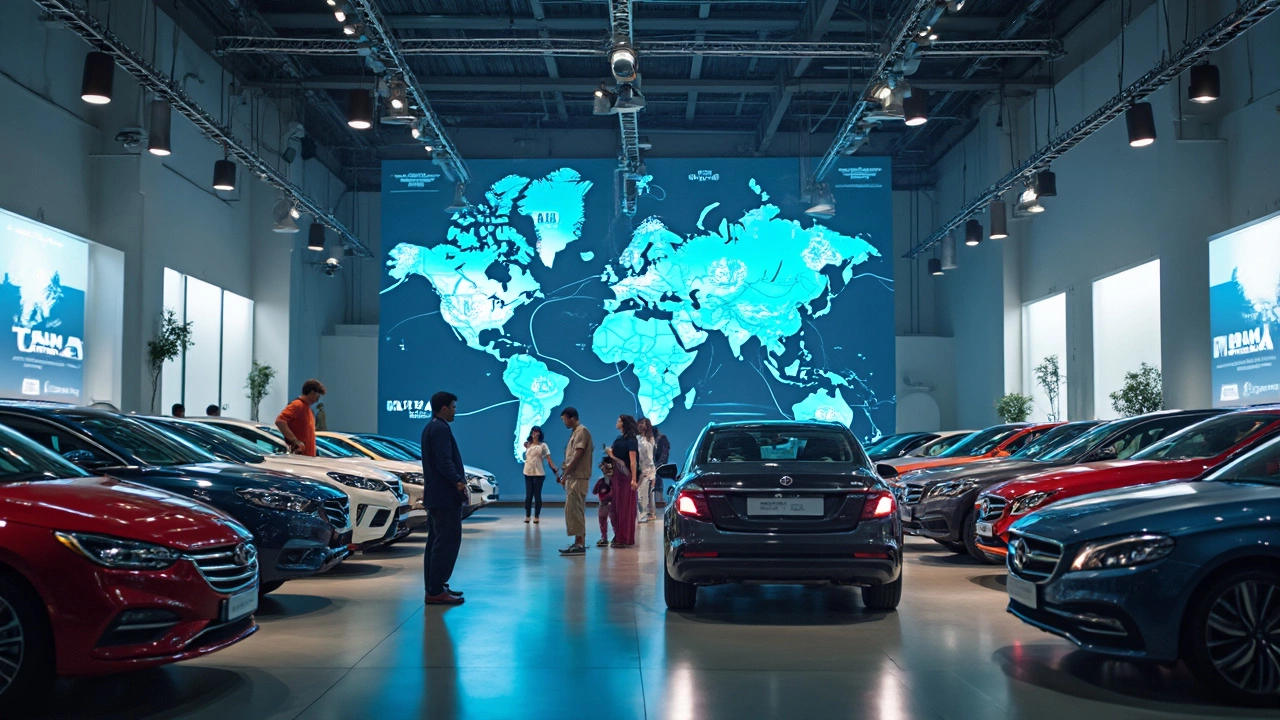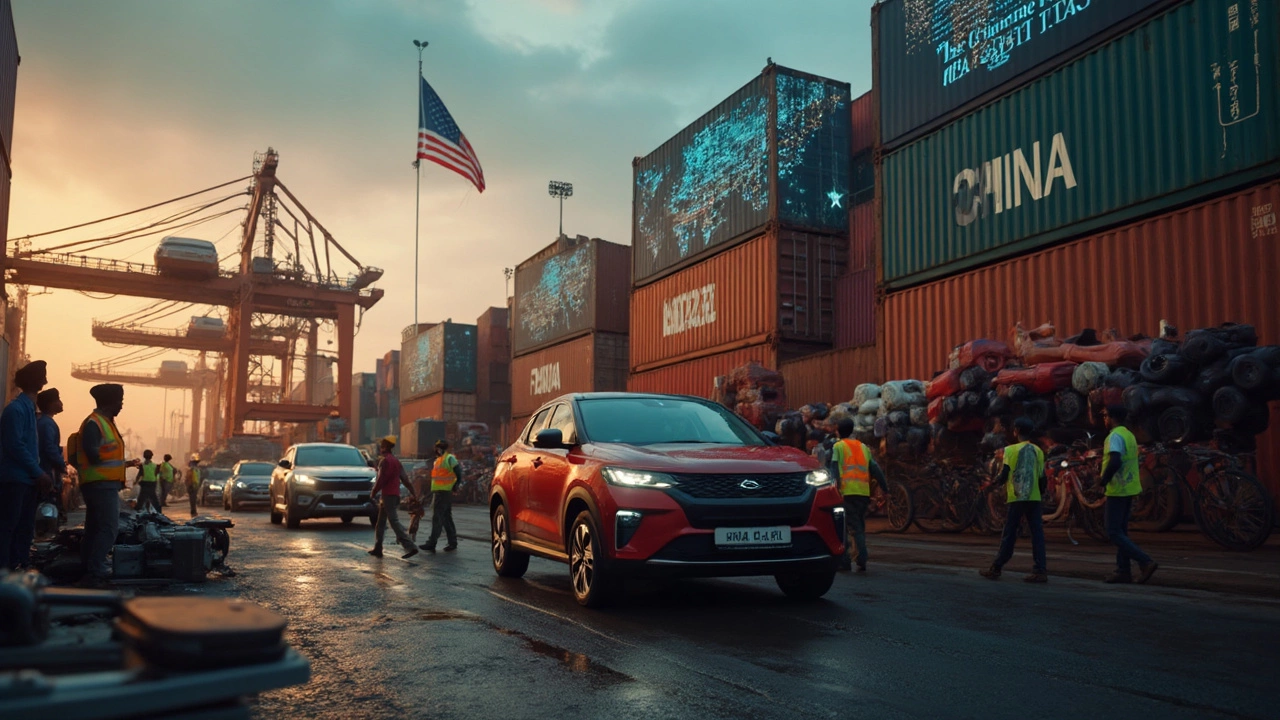Are Any Cars Made in China Sold in the US?

Thinking all cars on US roads are either icons from Detroit or imports from Japan? Not so fast. Some cars sold in America actually come straight from factories in China, despite the trade drama you’ve probably heard about. Most folks are surprised to see Chinese-built vehicles in US showrooms at all, since tariffs and politics make it tough for brands to ship stuff across the Pacific.
But here’s the weird bit: you might already know someone driving a made-in-China car without realizing it. Brands like Buick and Volvo have quietly slipped these vehicles onto US dealership lots. It’s not that the driveway is suddenly full of Chinese badges, but a few models are sneaking through—often because they’re weird hybrids or niche models that aren’t made anywhere else.
Wondering why any brand would do this if it’s such a headache? Sometimes, building in China is cheaper, and some models just don’t make sense to manufacture anywhere else. If you’re checking out a new ride and want to know where it’s built, the sticker on the window tells you more than the sales guy ever will. So, if you care about where your wheels come from—financially or politically—you need to dig a little deeper than just the hood badge.
- Which Chinese-Made Cars You’ll Find in the US
- What’s the Big Deal? Why It’s Rare
- Why Automakers Outsource to China
- How to Tell Where Your Car’s Made
- What This Means for India’s Auto Future
Which Chinese-Made Cars You’ll Find in the US
Shopping for a car in America, you’ll notice that cars built in China aren’t front and center. Brands mostly keep it quiet. But, yep, some models are shipped right from Chinese factories and wear big names you already know.
Let’s get specific. Buick has been at the front of this. For a while, the Buick Envision—a midsize SUV—was made in China and sold directly to US buyers. No sneaky re-badging or funny business: you could find Chinese VINs on new Envisions at your local dealership. It wasn’t some budget experiment either; it’s a serious, mainstream SUV on US roads.
Volvo has played a similar game. The S90 luxury sedan, aimed at folks who want something sleeker than a German ride, was imported straight from China for American buyers. In 2023, some versions of the Polestar 2, a futuristic electric car from Volvo’s offshoot brand, were also assembled in China before arriving in the US. It’s not a flood of Chinese-made Fords or Toyotas, but these have made it through the trade maze.
Here’s a snapshot of some actual models and years they hit the US with Chinese roots:
| Model | Brand | Type | China Production Years (US Sale) |
|---|---|---|---|
| Envision | Buick | SUV | 2016–2023 |
| S90 | Volvo | Sedan | 2018–2022 |
| Polestar 2 | Polestar (Volvo) | Electric Sedan | 2020–present |
Why do you rarely see a big wave of these? Because US tariffs on cars made in China are daunting—25% on top of regular import taxes. That’s a massive bump that scares off most brands. Still, some go for it when the math works or when there’s no other place they’re building a certain car.
If you want to check your own car’s story, just peek at the VIN. If it starts with "L," your ride likely came from a Chinese assembly line. This can actually help if you’re digging into used cars, too—you’ll know exactly what you’re dealing with.
What’s the Big Deal? Why It’s Rare
Finding a car made in China at an American dealership is pretty unusual. The main reason? Import tariffs. Since 2018, the US government has slapped a 27.5% tariff on Chinese-built vehicles. That’s way higher than the usual 2.5% on cars from other countries, making it much more expensive for brands to bring these cars in. For most automakers, it just doesn’t make financial sense.
On top of that, politics play a big role. Standoffs between the US and China keep companies on their toes. Nobody wants to ship thousands of cars only to get slammed with an unexpected rule change. Automakers would rather build cars inside the US, Mexico, or Canada, where trade is more predictable and cheaper, thanks to deals like NAFTA (now USMCA).
Here’s a look at the tariff rates and how they compare:
| Country | Car Import Tariff (to US) |
|---|---|
| China | 27.5% |
| Japan | 2.5% |
| Mexico | 0% (under USMCA) |
| Germany | 2.5% |
There's another angle too: public trust. A lot of buyers still worry about the quality or safety of cars made in China, even though some Chinese plants build for brands with strict standards like Volvo or GM. So, automakers have to convince folks that a car made in China is just as good as one built anywhere else.
All these factors make the US a tough place for Chinese-built cars. When you actually spot one, it's because the car offers something special—like unique electric tech, or it's a model you can’t get from other factories. Mostly, Chinese-built cars are a tiny slice of the overall US market.

Why Automakers Outsource to China
People always ask: why risk the hassle and ship cars across oceans? Well, the answer is mostly about saving money and making things faster. China has built a reputation as the world’s assembly line, and that’s no accident. Wages are lower, factories are seriously high-tech, and supply chains run like clockwork. For automakers juggling costs, these benefits are hard to ignore.
Let’s look at some hard numbers. According to Statista, as of 2024, China makes over 21 million passenger cars per year, dwarfing the US total. That means building cars in China isn’t just cheap; it’s also efficient. If you want to crank out thousands of vehicles in months, Chinese plants can do it. Plus, there’s the supplier network—years of electronics and gadget manufacturing mean auto parts factories are right next door, keeping shipping costs and wait times down.
Here’s another kicker: for some cars—especially the niche ones—it simply isn’t worth opening a huge factory elsewhere. The Buick Envision, for example, is made in China because US demand alone wouldn’t justify its own plant in America. And Volvo’s S90 sedan ships from China to the US for similar reasons. It’s all about balancing where people want the car with where it’s reasonable to build it.
- cars made in China often serve as the go-to option for global brands experimenting with less popular models.
- Brands can avoid expensive re-tooling in home countries and stick with established Chinese suppliers.
- Some components, especially electronics, are already manufactured nearby—less hassle for final assembly.
Check out this quick stat rundown if you need a snapshot:
| Country | Passenger Cars Produced (2024 est.) |
|---|---|
| China | 21 million+ |
| USA | About 7 million |
| India | 4.4 million |
All this doesn’t mean brands aren’t facing headaches—tariffs, political feuds, changing laws—but China’s mix of cheap labor, scale, and tech keeps drawing carmakers who need to keep prices (and headaches) as low as possible.
How to Tell Where Your Car’s Made
The easiest way to figure out where your car was put together is to check the VIN (Vehicle Identification Number). Every car sold in the US has one. That jumble of numbers and letters you see at the windshield base actually tells you a ton—including if your ride is one of the few cars made in China that found its way to an American driveway.
Here’s how you crack the code. The very first character in the VIN shows you the country where the car was built. If it starts with "1," "4," or "5," that means the US. "J" is for Japan, "K" for South Korea, and if you see an "L," your car rolled out of a Chinese factory.
- L: China
- 1, 4, 5: USA
- J: Japan
- K: Korea
- W: Germany
- 3: Mexico
Don’t want to decipher the VIN? Take a look at the sticker on the driver’s door jamb. Cars sold in the States must have a label that says the car’s final assembly point, plus the percentage of US, Canadian, and ‘other’ parts. It’ll literally say, for example, “Final assembly: China.”
If you love data, there’s an actual yearly report: the American Automobile Labeling Act (AALA) data. It breaks down every new car model by where it’s assembled and how much is made in America. Some news outlets even rank cars by their “American-ness.”
| VIN Starting Letter | Country of Manufacture |
|---|---|
| L | China |
| 1, 4, 5 | United States |
| J | Japan |
| K | South Korea |
| W | Germany |
| 3 | Mexico |
One thing to remember: big brands build the same model in different factories for different markets. For instance, the Buick Envision you see in a US showroom is made only in China, so it’ll have an "L" VIN. A Honda CR-V in the US could be from Ohio or Japan, depending on the exact trim. If you really care where it’s made, double-check the VIN and those labels before you buy. It’s not just trivia: sometimes, warranty and resale value change depending on where your car was built.

What This Means for India’s Auto Future
So, what do Chinese-made cars showing up in the US mean for India’s auto scene? First off, it’s kind of a wake-up call. If China can navigate all the headaches and tariff battles to get their cars into American garages, there’s no reason India can’t do something similar—especially since Indian manufacturers already ship to dozens of other countries.
Tata Motors, Mahindra, and Maruti Suzuki are already getting serious about exports, but cracking the US market is a whole different ball game. Cars made in China, like the Buick Envision and the Volvo S90, have proven that global supply chains aren’t just theory—they’re real, and they’re moving fast. This is a sign for Indian brands to start thinking bigger and smarter, especially if they want to make a mark in places people expect only big names from Japan, Germany, or America.
“India has all the ingredients to be a global export hub, but we need to focus on quality, safety, and design that truly caters to Western markets. China’s progress is proof that it’s possible,” said Rajiv Bajaj, Managing Director at Bajaj Auto, in an industry webinar last year.
If you look at the numbers, India’s automobile exports have been climbing. In 2024, India shipped nearly 800,000 passenger cars and 3.5 million two-wheelers overseas. Still, breaking into the US—where safety and emission standards are tight—takes more R&D muscle and deep partnerships with global firms.
| Indian Car Exports (2024) | Number of Units |
|---|---|
| Passenger Cars | 790,000 |
| Two-Wheelers | 3,500,000 |
| Commercial Vehicles | 160,000 |
Here are a few actionable moves India’s carmakers can steal from the Chinese playbook:
- Double down on developing EV tech and hybrids—niche models grab global attention.
- Meet or exceed US safety and emissions standards; cut corners here and you’re done before you start.
- Use free trade agreements to your advantage—shipping costs matter way more than you’d think.
- Build global partnerships to get your foot in the door with local sales and service networks.
The real deal? If India plays it smart, Chinese cars in the US could be just the nudge Indian automakers need. With more investment in tech and quality, it’s just a matter of time before you spot an Indian-made car sitting in an American driveway, showing how cars made in China paved the way for a new wave of Asian exports.





